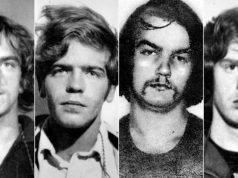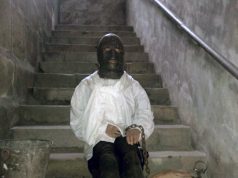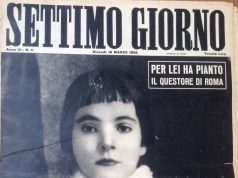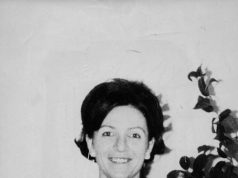
Italian history is full of unsolved cases. “Italian Mysteries”, are often defined as these events – news or political – are far from being officially clarified and, therefore, handed over to history. Facts that inevitably arouse interest and curiosity, teasing the imagination of scholars, experts, historians, simple enthusiasts: the “mystery”, we know, fascinates and tickles, even when it comes to crimes. In this sense, the history of the Mostro di Udine (Monster of Udine) is fully placed in the vast and polychrome band of the great “Italian mysteries”.
The victims
Rainy nights, weekends, prostitutes. These are three of the many characteristics that can be traced back to the so-called “Monster of Udine”. The blood trail begins – or rather, would begin – on September 21, 1971. Inside her car, Irene Belletti’s body lies lifeless. It was secluded near the station of the capital of Friuli. The woman was killed with several cuts. Irene’s car reveals numerous fingerprints, perhaps even those of her killer.
On November 6, 1972, in an apartment in the center of Udine, the body of Elsa Moruzzi, 52 years old, is found: the news speak of a broken skull and strangulation. In December 1975, it was the turn of Eugenia Tilling: the woman’s neck is pierced by deadly stabs.
At the end of September 1976, the body of another woman, near Moruzzo, is found: it is Maria Luisa Bernardo. Like the first victim – Irene Belletti – she is also stabbed to death: the killer’s blade pierces various parts of her body. It is easy, therefore, to imagine a connection between the two crimes.
October 3, 1979: In Colugna, in the province of Udine, Jacqueline Brechbullher – 46 years old, French, married in Udine at the end of the 1960s – is assassinated with ten stabs.
On 19th February 1980, near Pradamano (Udine), the corpse of Maria Carla Bellone, 19, a prostitute, was discovered. Bellone, to this day, is the first of the four victims surely ascribable to the “Monster of Udine”. The other victims attributable without doubt to the “Monster of Udine” are: Luana Gianporcaro (22 years old, prostitute), killed on 24 January 1983; Aurelia Januschewitz, 42 years old, prostitute, killed on 3 March 1985; Marina Lepre, primary school teacher, mother of 40 years old, separated, killed on 26 February 1989. The woman’s body was found on the banks of the Torre river, a tributary of the Isonzo; on the victim’s belly, a long “S” incision stands out. Wounds to the neck and throat are unfailing. Four women killed with a precise modus operandi.
But that’s not all. Between March 1980 and September 1991, other women were found dead in circumstances that were not yet clear, even though, in two cases, two men were brought to justice. We are talking about other alleged victims attributable to the “Udine Monster”: Wilma Ghin, whose charred body was found at Gradisca on March 4, 1980; Maria Bucovaz, killed strangled in 1984; Matilde Zanette, 44, killed on September 9, 1984 (for this murder, Gianluigi Sebastianis was arrested, who first confessed to the crime, then retracted. However, he will be sentenced to 17 years imprisonment); Stojanka Joksimovic (strangled in December 1984); Nicla Perabò, killed in September 1991 (for this crime, Bruno Leita is arrested, sentenced in January 1993 to 17 and a half years in prison).
Who is the Monster of Udine?

This simple question has been vague and hovering like a ghost since the 1970s. The case of the Mostro di Udine, however, does not find any clear and productive way of investigation. Among the lack of evidence, significant and in-depth investigations and scientific and investigative methodologies that, today, could instead lead to the capture of the murderer, the Udine Monster has never revealed its identity.
Experts in the field – profiler, forensic doctors, anatomopathologists – have tried on several occasions to outline the peculiarities that distinguish this serial killer. It is a man who has deep and sadistic resentments towards women. Therefore, a sense of frustration produced by a traumatic event emerges overwhelmingly. The bodies of the victims, in addition to presenting various stab wounds (especially to the throat and neck: all the victims attributable to the “Monster of Udine” have died from stab wounds located in the anterior or lateral region of the neck), reveal an unmistakable “S” incision on the belly and abdomen (up to the pubis), probably made with the use of a surgical scalpel.
Longitudinal or transversal ritual cuts intended exclusively to mutilate – but without killing – the victim (as opposed to the cuts to the neck), say experts. In the first murder only one cut is counted, in the second crime the cuts become two, then three on the body of the third victim ascertained and so on. In only one case the cuts show signs of cauterization. The victims, surely attributable to the Udine Monster, are killed between the end of January and the beginning of March, always on weekends and rainy nights. Typical distinctive elements of a single hand, of a single criminal direction.
A man, the Monster of Udine, who feels hatred towards women but, at the same time, knows well the female anatomy. And, above all, he carefully chooses his victims. Defenseless, weak women, prostitutes or women who are likely to be confused with them.
Some sources indicate the victims are all related with hospital environment: a medical examination, hospitalization, drug addiction, psychic problems. According to some experts, the serial murderer is a man who, for some reason, could not practice the medical profession. The cuts, in fact, are compatible with the techniques used at the time for the caesarean section. A fragile man, obviously a psychopath, whose frustration, even sexual, has been channelled and expressed in the form of misogynist homicidal anger.
The suspicion

The Monster of Udine, at least offically, has not a name nor a face. However, in the aftermath of the already mentioned crime of Marina Lepre (26 February 1989), there is a fact that still causes discussion today and that raises more than one question. Not far from the point where the body of Marina Lepre was found, there is a man in an obvious state of confusion. Desperate, he begs for forgiveness. Forgiveness for what? The investigators identify the man: he is a sixty year old, graduated in gynecology but who has never been able to practice the medical profession because of his mental disorders. The name of the man has never been made public.
In their hands, however, investigators have few and incomplete clues. A shawl, which belonged to Marina Lepre, has interesting traces, but the scientific departments have never shown evidence attributable to the only suspect. In the meantime, the doctor is dead. It was 2006. The crime, in fact, became extinct with the death of the man, the only suspect.
Is the Monster of Udine really this man, now deceased, whose name has never been made public? A doctor with mental disorders who, therefore, has never been able to practice the profession? A man who, near the place where the body of what is identified as the last victim really attributable to the “Monster” was found, crying out for forgiveness?
Theories and suggestions follow one another. There are even those who go so far as to hypothesize the presence of two serial killers, who act according to different modus operandi: the strangler and the “surgeon” with a scalpel. Truth, legend? There is a third option: the Udine Monster is still alive.
This is probably the most disturbing hypothesis, even if not demonstrable. A serial killer who acted in the past, showing more or less long pauses between one crime and another, but who, for decades and for reasons unknown to us, would be silent, no longer active.
The crimes of the Monster of Udine have never had the visibility and the clamour that, generally, belong to such cases of crime news. Even today, many years later, those death without a culprit still shyly peep out in the folds of the crowded Italian crime news. The well-known TV show “Chi l’ha visto?” and, in particular, the daughter of Marina Lepre – Fedra Peruch, at the time a 9-year-old girl – have recently tried to rekindle the spotlight around a case of news that is anything but marginal.
In this sense, Marina Lepre’s daughter is the most enterprising. She also provides her own version of the facts. Marina Lepre, at the time of her crime, is a divorced woman: the separation from her husband, moreover, causes her a serious depressive state. According to Fedra Peruch, her mother – that evening of February 26, 1989 – asked for a ride home by car. Probably, she didn’t feel like driving in a psychophysical state that was not optimal. However, the “Monster” offered her the passage, who, according to Fedra, traded her mother for a prostitute. The events, then, precipitate and culminate in the murder.
Marina Lepre holds an unknown bunch of keys in her hand. The investigators have never gone back to the owner of these keys.
The case of the Monster of Udine, now, lies in the drawers and cabinets of the palaces of justice. Filed. Events passed almost silently at the time of the events, later definitively forgotten.
Serial killers who, after having struck and sown fear among the population, disappear into the shadows, unresolved cases, identities never revealed, “monsters” from the modus operandi imbued with rituality.
Who really is the Monster of Udine?
Photo credit: repubblica.it















